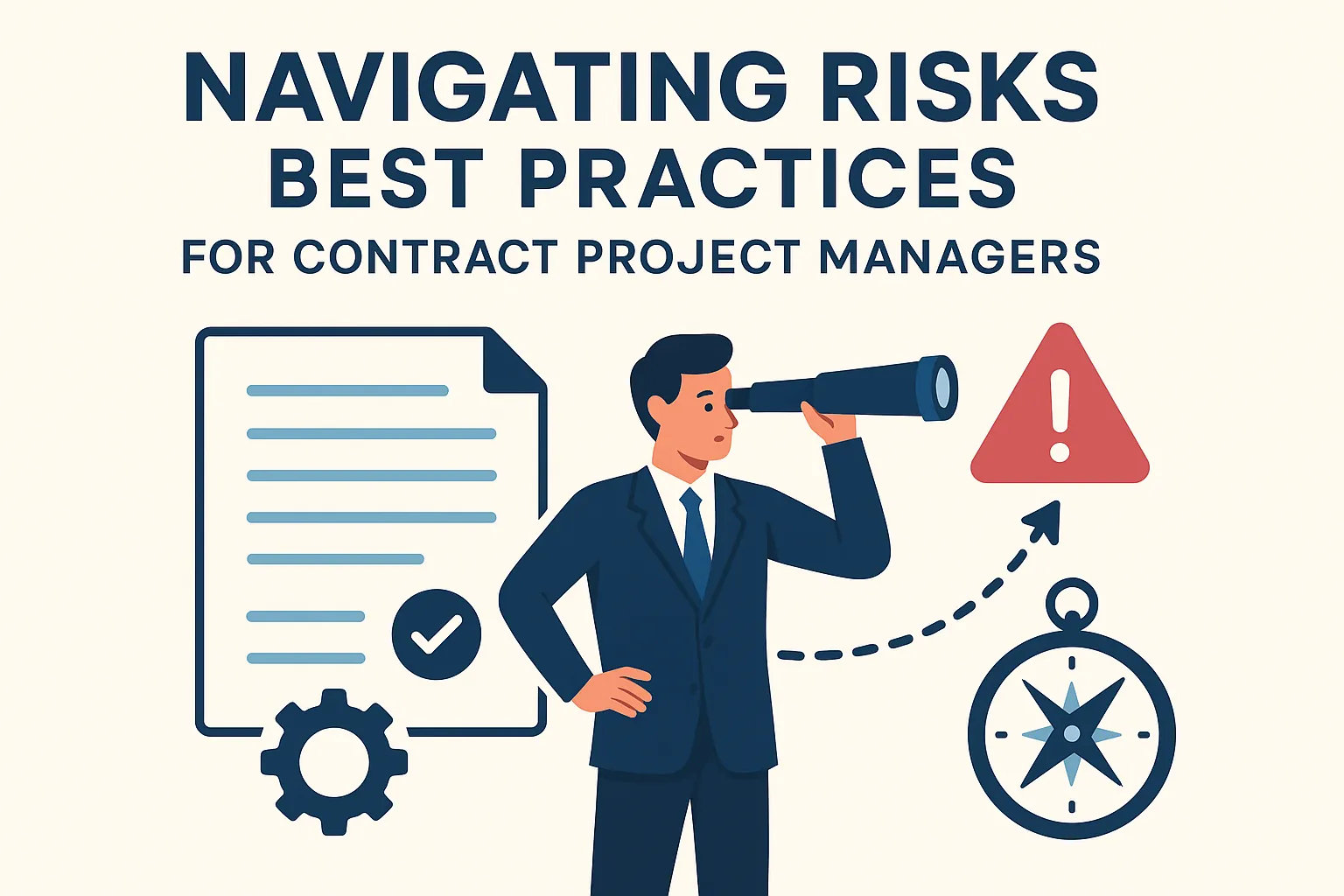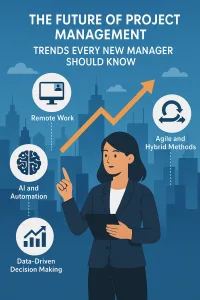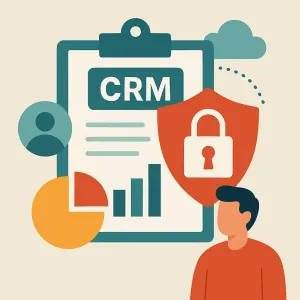Introduction
Contract project management is a specialized field within project management that focuses on overseeing projects governed by contracts. This role involves not only ensuring that project deliverables meet the specified requirements but also managing the complexities and unique challenges that arise from contractual obligations. Contract project managers must navigate a landscape filled with potential pitfalls, including financial losses, legal disputes, and project delays, all of which can stem from poorly managed contracts. Given that no contract is entirely foolproof, the ability to effectively manage these risks is paramount for success in this role.
The significance of risk management in contract projects cannot be overstated. It serves as a proactive approach to identifying, assessing, and mitigating risks that could jeopardize project outcomes. By implementing robust risk management strategies, contract project managers can minimize the likelihood of disputes and ensure that projects remain on track and within budget. This not only protects the organization’s interests but also fosters a collaborative environment among stakeholders, enhancing overall project performance.
In this blog post, we will delve into best practices for contract project managers, focusing on effective risk management techniques. We will explore essential strategies such as conducting thorough risk assessments, implementing risk mitigation plans, and maintaining continuous monitoring and review processes. By equipping contract project managers and risk analysts with these insights, we aim to empower them to navigate the complexities of contract management with confidence and agility, ultimately leading to more successful project outcomes.
Understanding Risks in Contract Projects
Contract project managers play a crucial role in ensuring that projects are executed smoothly and successfully. However, they face a myriad of risks that can significantly impact project outcomes. Understanding these risks is essential for effective risk management and successful project delivery. Below is a comprehensive overview of the types of risks contract project managers encounter, their potential impacts, and how these risks can vary based on different factors.
Common Risks in Contract Projects
- Financial Risks: Financial risks are among the most prevalent in contract projects. These can include budget overruns, unexpected costs, and cash flow issues. Poor financial management can lead to project delays or even project failure if not addressed promptly [9].
- Operational Risks: Operational risks arise from the day-to-day activities of the project. This includes risks related to resource allocation, scheduling, and the performance of team members. Inefficient operations can hinder project progress and affect overall productivity [9].
- Legal Risks: Legal risks involve compliance with laws and regulations, as well as the potential for disputes arising from contract terms. Misunderstandings or misinterpretations of contractual obligations can lead to legal challenges, which can be costly and time-consuming [9].
- Performance Risks: Performance risks pertain to the ability of the project to meet its objectives, including quality standards and deadlines. Setting clear performance metrics and quality standards in contracts is essential to mitigate these risks [12].
- Regulatory Risks: Regulatory risks are associated with changes in laws or regulations that may affect the project. Staying informed about relevant regulations is crucial for contract project managers to avoid compliance issues [9].
Impact of Risks on Project Outcomes
The impact of these risks on project outcomes can be significant. Financial risks can lead to budget constraints, which may force project managers to cut corners or reduce the scope of the project. Operational risks can result in delays and decreased efficiency, ultimately affecting the project’s timeline and deliverables. Legal risks can lead to disputes that not only consume resources but also damage relationships with stakeholders. Performance risks can compromise the quality of the final product, leading to dissatisfaction among clients and stakeholders [9][12].
Variability of Risks Based on Project Size, Scope, and Industry
The nature and extent of risks can vary widely depending on several factors:
- Project Size: Larger projects often involve more complex contracts and a greater number of stakeholders, which can increase the likelihood of encountering various risks. Smaller projects may have fewer risks but can still face significant challenges if not managed properly [9].
- Project Scope: Projects with a broad scope may encounter more operational and performance risks due to the increased number of tasks and deliverables. Conversely, projects with a narrow focus may have fewer variables to manage, but they can still face financial and legal risks if not carefully planned [9].
- Industry: Different industries have unique risk profiles. For instance, construction projects may face more regulatory and safety-related risks, while IT projects may encounter more operational and performance-related challenges. Understanding the specific risks associated with the industry is vital for effective risk management [9].
Risk Assessment Techniques
Effective risk assessment is paramount to ensuring project success and minimizing potential losses. Contract project managers must employ a variety of techniques to identify, analyze, and mitigate risks associated with their projects. Below are some best practices and strategies for assessing risks in contract projects.
Qualitative and Quantitative Risk Assessment Methods
Qualitative Risk Assessment:
- This method involves evaluating risks based on their likelihood of occurrence and potential impact. It often utilizes a risk matrix to categorize risks as low, medium, or high. Qualitative assessments are particularly useful in the early stages of a project when detailed data may not be available.
- Techniques such as brainstorming sessions, expert interviews, and focus groups can help gather insights from team members and stakeholders, allowing for a comprehensive understanding of potential risks.
Quantitative Risk Assessment:
- In contrast, quantitative risk assessment employs numerical data to evaluate risks. This method often involves statistical analysis and modeling to predict the potential impact of risks on project objectives, such as cost and schedule.
- Common techniques include Monte Carlo simulations, decision tree analysis, and sensitivity analysis. These methods provide a more precise understanding of risks and their potential effects, enabling project managers to make informed decisions.
Importance of Stakeholder Engagement
Engaging stakeholders in the risk assessment process is crucial for several reasons:
- Diverse Perspectives: Stakeholders bring varied experiences and insights that can help identify risks that may not be apparent to the project team alone. Their involvement ensures a more comprehensive risk assessment.
- Buy-in and Support: When stakeholders are actively involved in identifying and assessing risks, they are more likely to support the risk management strategies developed. This collaboration fosters a sense of ownership and accountability.
- Communication: Regular communication with stakeholders about risks and mitigation strategies helps build trust and transparency, which is essential for effective project management.
Tools and Software for Risk Assessment
Several tools and software solutions can aid contract project managers in conducting effective risk assessments:
- Risk Management Software: Tools like RiskWatch and RiskyProject provide functionalities for identifying, analyzing, and monitoring risks throughout the project lifecycle. They often include features for creating risk registers, conducting qualitative and quantitative analyses, and generating reports.
- Project Management Software: Platforms such as Microsoft Project and Asana can integrate risk management features, allowing project managers to track risks alongside project tasks and milestones.
- Collaboration Tools: Software like Trello and Slack can facilitate stakeholder engagement by enabling real-time communication and collaboration on risk assessment activities.
By employing these risk assessment techniques and tools, contract project managers can enhance their ability to navigate the complexities of contract projects, ultimately leading to more successful outcomes. Effective risk management not only protects the project but also contributes to the overall success of the organization.
Developing a Risk Management Plan
Developing a comprehensive risk management plan is essential for navigating the complexities and uncertainties inherent in projects. A well-structured plan not only identifies potential risks but also outlines strategies to mitigate them, ensuring that projects remain on track and within budget. Here are the key components and considerations for contract project managers when creating an effective risk management plan.
Key Components of a Risk Management Plan
- Risk Identification: This initial step involves recognizing potential risks that could impact the project. It is crucial to engage team members and stakeholders in brainstorming sessions to uncover a wide range of risks, including financial, operational, and compliance-related issues. Utilizing risk tracking templates can help in logging identified risks systematically [6][14].
- Risk Analysis: Once risks are identified, the next step is to analyze their potential impact and likelihood. This involves assessing how each risk could affect project objectives, timelines, and budgets. A qualitative and quantitative analysis can provide insights into which risks require immediate attention and which can be monitored over time [10][15].
- Response Strategies: Developing response strategies is critical for managing identified risks. This includes formulating plans to avoid, mitigate, transfer, or accept risks. Each strategy should be tailored to the specific risk and should include contingency plans (Plan B, C, etc.) to address various scenarios that may arise during the project lifecycle [5][6].
Roles and Responsibilities in Risk Management
Effective risk management is a collaborative effort that requires clear roles and responsibilities among team members:
- Risk Manager: Appointing a dedicated risk manager is vital. This individual is responsible for overseeing the risk management process, ensuring that risks are monitored, and that the risk management plan is implemented effectively [5].
- Project Team Members: All team members should be encouraged to participate in risk identification and reporting. Their insights can be invaluable in recognizing risks that may not be immediately apparent to management [11].
- Stakeholders: Engaging stakeholders in the risk management process helps in aligning their expectations and gaining their support for risk mitigation strategies. Regular communication with stakeholders about risks and their management is essential for maintaining transparency [9].
Importance of Regular Reviews and Updates
A risk management plan is not a static document; it requires regular reviews and updates to remain effective. As projects evolve, new risks may emerge, and existing risks may change in severity or likelihood. Therefore, contract project managers should:
- Schedule periodic reviews of the risk management plan to assess its effectiveness and make necessary adjustments based on project developments and external factors [8][12].
- Foster a culture of continuous improvement by encouraging team members to report new risks and suggest enhancements to the risk management strategies [9].
By focusing on these key components and fostering a collaborative approach to risk management, contract project managers can significantly enhance their ability to navigate risks, ultimately leading to more successful project outcomes.
Implementing Risk Mitigation Strategies
For contract project managers, effective risk mitigation is crucial for ensuring project success and minimizing potential setbacks. Here are several actionable strategies that can be employed to navigate risks effectively:
1. Risk Mitigation Strategies
- Avoidance: This strategy involves altering the project plan to eliminate the risk or protect the project objectives from its impact. For instance, if a contractor identifies that a specific supplier poses a significant risk due to reliability issues, they might choose to source materials from a more dependable supplier instead.
- Transfer: Transferring risk involves shifting the impact of a risk to a third party, often through contracts or insurance. For example, a contractor might purchase insurance to cover potential liabilities or subcontract certain high-risk tasks to specialized firms, thereby transferring the associated risks.
- Acceptance: Sometimes, the best course of action is to accept the risk when the costs of mitigation are higher than the risk itself. This strategy is often accompanied by a contingency plan. For instance, a project manager might accept the risk of minor delays due to weather conditions, while preparing a buffer in the project timeline to accommodate such delays.
- Reduction: This strategy focuses on reducing the likelihood or impact of a risk. For example, implementing rigorous quality control measures can reduce the risk of defects in construction projects. Regular training sessions for staff can also enhance skills and reduce operational risks.
2. Importance of Communication and Documentation
Effective communication and thorough documentation are vital components of successful risk mitigation strategies.
- Communication: Regular updates and open lines of communication among all stakeholders ensure that everyone is aware of potential risks and the strategies in place to address them. This collaborative approach fosters a culture of transparency and responsiveness, enabling quicker adjustments to risk management plans as needed.
- Documentation: Keeping detailed records of risk assessments, mitigation strategies, and outcomes is essential for learning and improvement. Documentation serves as a reference for future projects, helping project managers to identify patterns and develop more effective risk management strategies over time.
Monitoring and Reviewing Risks
Particularly for contract project managers, the ongoing monitoring and review of risks is not just a best practice; it is a necessity. The dynamic nature of projects means that risks can evolve, emerge, or even dissipate over time. Therefore, continuous risk monitoring throughout the project lifecycle is crucial for ensuring project success and compliance.
Importance of Continuous Risk Monitoring
Continuous risk monitoring allows project managers to maintain a proactive stance towards potential issues that could derail project objectives. By regularly assessing risks, project managers can:
- Identify Emerging Risks: New risks can arise from changes in project scope, stakeholder expectations, or external factors. Regular monitoring helps in identifying these risks early, allowing for timely interventions [4].
- Mitigate Risks Effectively: By keeping a close eye on identified risks, project managers can implement mitigation strategies before they escalate into significant problems. This proactive approach reduces the likelihood of non-compliance issues and contract breaches [4][9].
- Enhance Decision-Making: Ongoing risk assessments provide valuable data that can inform decision-making processes, ensuring that project managers are equipped with the latest information to guide their actions [9].
Key Performance Indicators (KPIs) for Risk Management
Establishing clear KPIs is essential for effective risk management. These indicators serve as benchmarks for assessing the health of the project and the effectiveness of risk mitigation strategies. Some important KPIs to consider include:
- Risk Exposure Levels: Measure the potential impact of identified risks on project objectives. This helps in prioritizing which risks require immediate attention [13].
- Frequency of Risk Occurrences: Track how often specific risks materialize. This data can inform future risk assessments and help in refining risk management strategies [12].
- Response Time to Risks: Evaluate how quickly the project team responds to identified risks. A shorter response time often correlates with better project outcomes [10].
By regularly reviewing these KPIs, contract project managers can ensure alignment with organizational goals and drive continuous improvement in contract performance [2].
Adapting and Responding to Emerging Risks
The ability to adapt to emerging risks is a hallmark of effective contract project management. As projects progress, new risks may surface that require immediate attention. Here are some strategies for adapting and responding to these risks:
- Regular Risk Reviews: Conduct frequent risk assessments to update the risk register and identify new risks. This should be a collaborative effort involving all stakeholders to ensure comprehensive coverage [11].
- Flexible Risk Management Plans: Develop risk management plans that are adaptable to change. This flexibility allows project managers to pivot quickly in response to new information or changing project dynamics [14].
- Stakeholder Communication: Maintain open lines of communication with stakeholders regarding risk status and management strategies. This transparency fosters a collaborative environment where risks can be addressed collectively [5].
Conclusion
Proactive risk management is not just a best practice; it is a fundamental necessity. The complexities and uncertainties inherent in contract management require a strategic approach to identify, assess, and mitigate risks effectively. By prioritizing contract risk management, project managers can safeguard their projects against potential pitfalls, ensuring smoother operations and better outcomes.
Key takeaways for contract project managers include:
- Proactive Risk Management: Emphasizing the importance of anticipating risks before they materialize is crucial. Regular monitoring and reassessment of risks, along with adapting strategies as needed, can significantly enhance resilience in project execution [1][3].
- Implementation of Best Practices: Applying best practices such as comprehensive contract reviews, maintaining a risk log, and establishing clear communication channels among stakeholders can lead to more effective risk management. Engaging legal teams and subject matter experts in the review process ensures a holistic understanding of potential risks [10][15].
- Continuous Learning and Development: Encouraging ongoing professional development in risk management is vital. Resources such as industry publications, workshops, and online courses can provide valuable insights and updates on emerging trends and techniques in risk management [4][14].
By integrating these practices into their daily operations, contract project managers can not only navigate the complexities of their roles but also contribute to the overall success and sustainability of their projects. Embracing a culture of proactive risk management will ultimately lead to more resilient project outcomes and a stronger foundation for future endeavors.
Find out more about Shaun Stoltz https://www.shaunstoltz.com/about/.
This post was written by an AI and reviewed/edited by a human.



